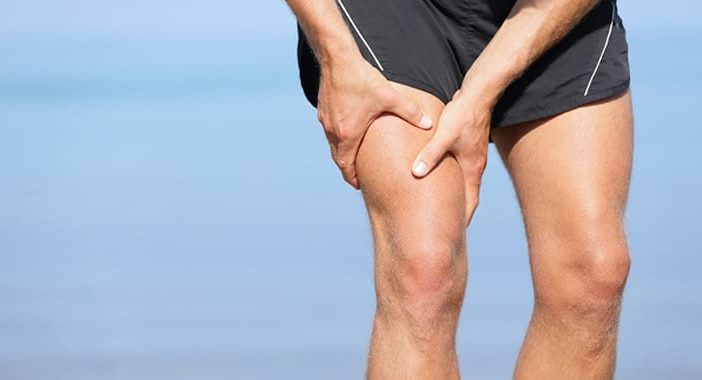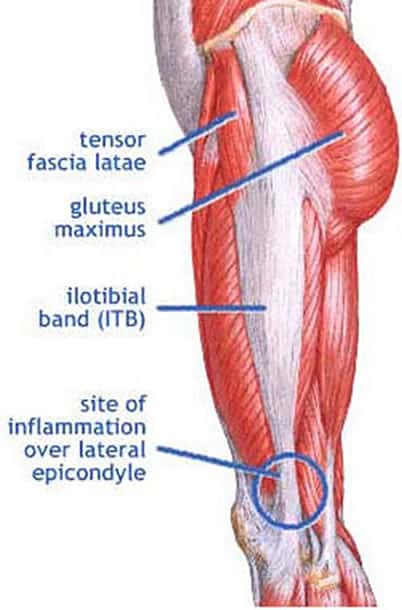
What is the IT Band?
The IT Band is composed of fibrous connective tissue that runs down the outside of the thigh. IT stands for ILIOTIBIAL, which is in reference to the primary connection sites of the band including the ilium bone of the pelvis at the top, and the tibia bone of the lower leg at the bottom. Dependent on the degree of bend in the knee during running, the IT band will have different levels of laxity (loose) or tautness (tight).


What is IT Band Syndrome?
IT band syndrome is a condition that commonly affect runners. As the knee bends, the IT band moves posterior (backward) over the bony projections of the femur. As the knee straightens, the IT band moves anterior (forward) over the bony projections of the femur.
When running, depending on distance, this back and forth motion of the IT band over the bony projections can occur thousands of times! Problems begin to present when these repeated motions generate excessive friction. Friction over time can lead to such things as inflammation, tightness, pain and a decline in the inability to participate in tasks we enjoy in life including running.
Risk Factors
Signs and Symptoms
Self-Care Strategies
Primary focus at immediate onset of IT band pain is to decrease inflammation. Below is a list of some general self-care strategies to assist you in managing the symptoms.
If the basic self-care strategies fail to completely resolve symptoms in 7 days or the condition gets worse, we strongly advise scheduling an appointment with one of expert Physical Therapists at PRO Therapy. Our specialist providers have extensive experience managing running injuries including those involving the IT band.
If you want the quickest path to get back to pain-free running, which YOU enjoy and love, get in touch with us today! Contact us directly at 612-662-0695
Do You Want to Be in Less Pain?
Maybe you’re left feeling Confused? Skeptical? Fearful? Anxious? Depressed? You’ve sought advice from other healthcare professionals, maybe even a Physical Therapist in the past, but nothing they seemed to say or do helped solve your problem.

